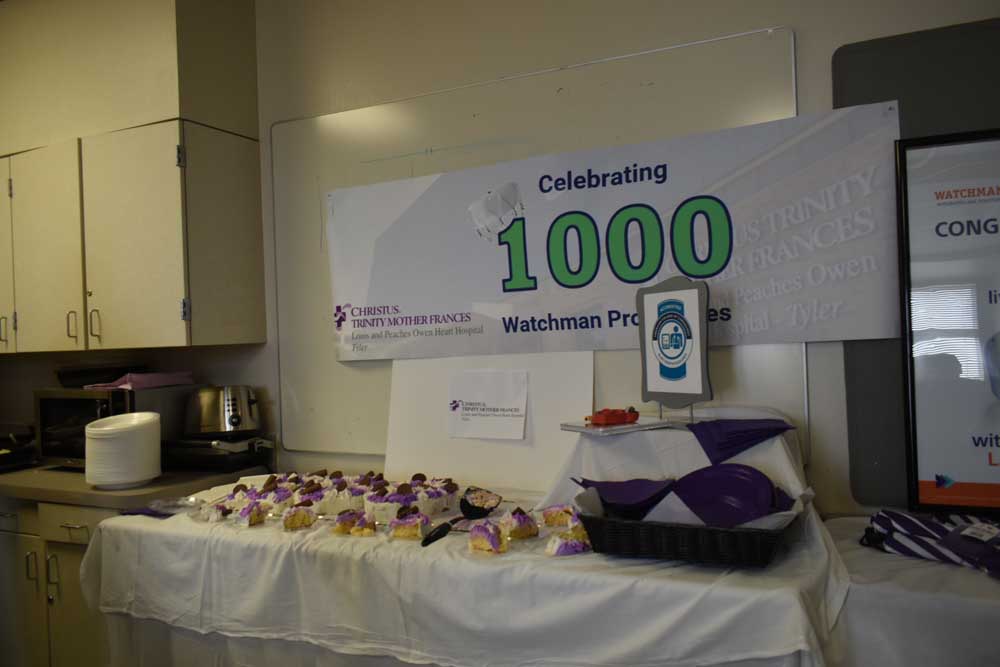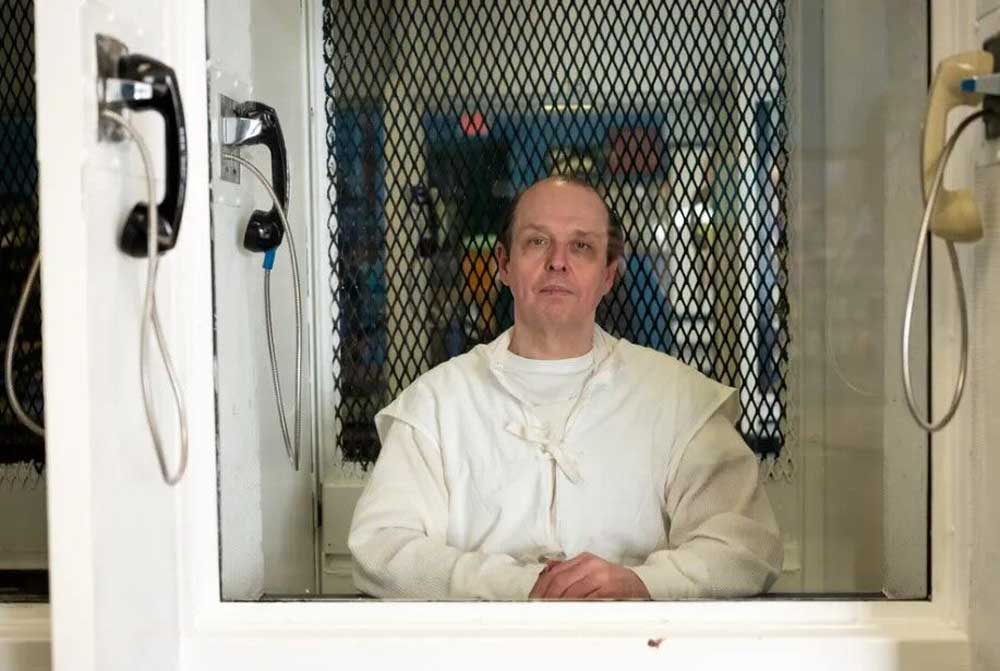Christus Louis and Peaches Owen Heart Hospital celebrates 1,000th successful WATCHMAN procedure
Published 5:30 am Sunday, February 11, 2024

- On Friday, Christus Heart Hospital celebrated their 1,000 Watchman procedure, which is used to treat atrial fibrillation, with cake.
Christus Louis and Peaches Owen Heart Hospital staff gathered to celebrate the 1,000th successful WATCHMAN procedure Friday afternoon.
Attendees congratulated the doctors as they talked, mingled and enjoyed cake and refreshments.
Trending
Friday’s celebration marked a milestone for the hospital’s history of successful implants of the WATCHMAN device, which is a breakthrough cardiac procedure that can reduce the risk of stroke, with a minimally invasive procedure for patients with atrial fibrillation.
The WATCHMAN device is a tiny implant that closes off an area of the heart called the left atrial appendage to keep harmful blood clots from entering the blood stream and potentially causing a stroke. By closing off the left atrial appendage, the risk of stroke is reduced and over time, patients may be able to stop taking other medications.
The WATCHMAN procedure has been done at the Heart Hospital since 2016 to treat atrial fibrillation, said Dr. John Sims, electrophysiologist at Christus Trinity Mother Frances. They have grown and gained experience over time as word got out and they have done more procedures. When they first did the procedure, it took around an hour and a half to two hours to complete the procedure. Now it takes only 30 minutes to perform the procedure.
Dr. Stanislav Weiner, director of electrophysiology at Christus Trinity Mother Frances, has performed 514 successful WATCHMAN procedures.
“This is 1,000 lives,” Weiner said. “Patients with atrial fibrillation are at high risk of stroke, frequently have challenges with conventional medications that we use to control this condition. This WATCHMAN procedure allows one to live a fuller life. We’re excited that we’ve been able to be on the front end of this therapy in East Texas and I’m continuing to provide it for many years.”
Currently, an estimated 6 million Americans are affected by Afib – an irregular heartbeat that feels like a quivering heart. Those with Afib have a five-times greater risk of stroke than those with normal heart rhythms.
Trending
East Texas is the epicenter of heart disease. Many patients in East Texas suffer from heart disease and atrial fibrillation. Christus is proud to provide the latest medical care and detect patients earlier aggressively before they develop problems, Weiner said.
The heart disease mortality rate was 27% higher in Northeast Texas than in Texas overall in 2019. If the region were a state, it would rank 47th in heart disease mortality. Heart disease was the No. 1 cause of death in Northeast Texas, according to the Health Status of Northeast Texas report from 2021.
By the year 2030, more than 12 million people will be impacted by atrial fibrillation in the United States. Atrial fibrillation is the No. 2 reason people come to the hospital, according to Deb Chelette, Christus Northeast Texas Vice President of Cardiovascular Services.
Christus also performs the procedure at Good Shepherd in Longview. Christus is able to help patients in East Texas to have a much-needed treatment.
“It gets patients back to their families to have more holidays, more birthdays, and to decrease their risk of complications and adverse outcomes related to atrial fibrillation,” Chelette said. “It is the right thing to do for our patients and for our community.”
Cardiac electrophysiologist at Christus Dr. Joshua Rutland has been performing the procedure for three years. On the day of the celebration, he came out of surgery to join in the festivities. Rutland is proud of the team and the milestone they reached.
“It really speaks to how high quality the care is,” Rutland said.
Older patients with atrial fibrillation are no longer able to tolerate blood thinners, one of the medications offered for the disease. This is why it is important to offer this treatment as Tyler has an aging population. For this kind of treatment, experience and a team approach is important.
“We don’t do 1,000 and have good outcomes without having a full team, it’s very trained,” Rutland said. “So this doesn’t happen without the rest of the team.”






